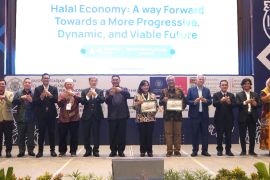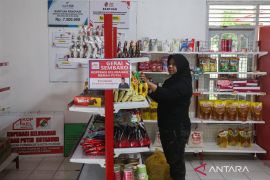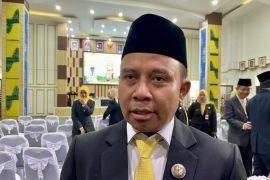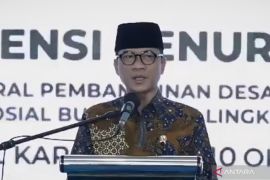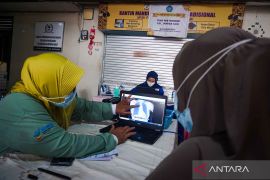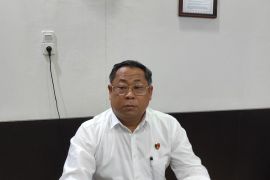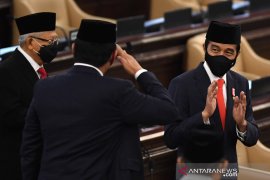Of late, volatile food inflation has been under the spotlight in Indonesia.
Given the scenario, villages need to examine the causes of inflation, which has currently become a global scourge in the midst of a food crisis.
Based on data from Statistics Indonesia (BPS), in August 2022, Indonesia experienced deflation of 0.21 percent. Meanwhile, the annual inflation rate reached 4.69 percent year on year (yoy), while the inflation rate for the calendar year (January–August) 2022 stood at 3.63 percent.
Then, volatile food inflation in August was recorded at 8.93 percent yoy, while food inflation for the calendar year (January-August) 2022 was pegged at 6.08 percent.
Bank Indonesia is targeting to bring food inflation in the range of 5 percent by the end of this year.
To achieve this end, village heads, village officials, Village Representative Bodies (BPD), and village assistants must work with other village governments, including the Regional Inflation Control Team (TPID) and the Central Inflation Control Team (TPIP), to continuously identify food commodities that are triggering inflation.
With good coordination, commodities that are available in large quantities in one village can be distributed to other villages experiencing price increases.
To ensure village funds are right on target so that the impact of inflation can be controlled and mitigated, the Ministry of Villages, Development of Disadvantaged Regions, and Transmigration (Kemendes PDTT) has issued the Villages Minister Decree Number 97 of 2022 concerning control and mitigation of regional inflation impact at the village level, which took effect on August 11.
The decree is meant to serve as a reference for village governments in planning, budgeting, and implementing inflation control programs and mitigating the impact of inflation at the village level with the help of village funds.
The ministry has set village food security goals, including increasing food availability through villagers' production and village food estates.
Other goals include improving food access for villagers, increasing the consumption of foods that are diverse, nutritionally balanced, safe, hygienic, of good quality, not in conflict with the religious beliefs and cultures of the community, and are based on the potential of local resources.
According to the decree, regional inflation control efforts at the village level can include providing data and information on production results and commodity prices in villages, especially food, production of commodities in the village, especially food and energy, as well as integrated economic activities, starting from the supply of raw materials, production processes, consumption, and recycling of waste for energy needs.
Regulating village fund use
As per Presidential Regulation Number 104 of 2021 on details of the 2022 State Budget, 20 percent of village funds are meant to be used for food and animal security programs.
This means that Rp13.6 trillion in village funds from a ceiling of Rp68 trillion in 2022 will be allotted for various food security programs in the country.
Based on data from Kemendes PDTT, as of September 2, the use of village funds for food security has reached Rp8.06 trillion, or about 59.3 percent of the ceiling budgeted for food security programs.
Thus, around Rp5 trillion of village funds have not been utilized for ensuring food security.
Therefore, village officials must actively utilize village funds to maintain food security at the village level, given that there is still enough time until the end of this year.
Minister of Villages, Development of Disadvantaged Regions, and Transmigration Abdul Halim Iskandar has allowed the use of village funds beyond the existing ceiling.
The ministry has regulated that village funds can be used for inflation control and regional inflation impact mitigation at the village level in several stages.
First, inflation control activities and mitigation of the impact of regional inflation at the village level can be decided in a special village meeting and included in the village budget.
Second, the special village meeting must be attended by the village government, village consultative body, community leaders, women, the poor, and other marginal groups.
Third, in the event that the village budget cannot be used, the special village meeting may decide on bailout funds for inflation control and regional inflation impact mitigation at the village level.
Optimism
The government is optimistic that, through village-based programs, villages will be able to contribute positively to curbing national inflation with various efforts.
The optimism is based on the fact that village funds can be utilized to support the acceleration of food security activities in villages, which may be realized in the form of infrastructure development, social assistance for farmers, farmers' empowerment, and increasing the capital of village-owned enterprises (BUMDes) related to food security.
Currently, there are 16,155 BUMDes that operate food businesses, with the total of workers in their employ reaching 100,911.
Therefore, villages are no longer considered objects but subjects and the spearhead of inflation control.
However, it needs to be underlined that the utilization of village funds for accelerating food availability must be carried out using the empowerment approach so that villagers can build their competency and become self-sufficient in meeting their food needs.
Thus, efforts to maintain inflation at the village level must be made optimal.
The reason is that controlled inflation would indicate that the market situation is balanced, meaning there is no significant deviation between the quantity of production and the level of consumer demand.
Accordingly, village governments and stakeholders must not merely conduct routine activities since the global condition is currently not normal so that villages can contribute to controlling regional food inflation at the village level as well as the national food inflation.
Related news: Village fund helped reduce number of underdeveloped villages: minister
Related news: Gov't helping villages manage unused COVID handling funds: ministry
Translator: Zubi Mahrofi, Raka Adji
Editor: Rahmad Nasution
Copyright © ANTARA 2022

